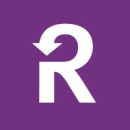When scaling a customer success team, Mary Rosberg, a customer success leader in San Francisco tech, recommends identifying two things: the cohort that drives the most revenue, and what it takes for those customers to derive key business value from your company’s solution.
From there, Rosberg said there are actions customer success managers (CSMs) can take and tools they can use to help ensure customers continue receiving business value. Creating an iterative, but flexible process is crucial, she said, but just as important is maintaining human connection with customers.
At subscription billing platform Recurly, Rosberg’s team employs tools that not only provide value with actionable insights, but also include the ability to pivot in a dynamic environment. CSM tools that measure health scores and touchpoints help teammates engage with clients regularly and keep a pulse on their pain points.
Financial data provider PitchBook relies on similar tactics, with Zoom becoming a much relied upon tool in the current pandemic, Director of Customer Success Jorja Jacobson said. When customers have questions about products, the empathy, trust and industry expertise garnered from human connection trumps automation every time, Jacobson said.
VP of Customer Success Mary Rosberg said that the tools customer success managers use at subscription billing platform Recurly offer actionable insights, track renewals and upsells, and measure customer health scores and touchpoints. Still, it’s important for these metrics to be accompanied with follow-through from CSMs that intimately know their clients’ pain points.
When it comes to scaling your customer success team, what are the most important considerations and why?
In preparation to scale the team, we analyzed our cohort of customers, quickly identifying the cohort that drives the most revenue. Then we determined what it takes for those customers to derive key business value from our solution. By “what it takes,” I mean the actions CSMs can take to help ensure that that tier of customers is getting business value. Define and categorize those actions as well as their frequency. From there, build ratios for CSM-to-merchant. Be iterative in this overall approach. No hard coding.
What tools or technologies do you use to make customer success more scalable?
We choose tools that provide value with actionable insights, including the ability to pivot in a dynamic environment. We draw on a sales CRM for renewals and upsell tracking. We utilize a CSM tool for playbooks, health scores and managing and measuring touchpoints. Our internal data analytics team provides templated views into customer data for use in executive business reviews. We leverage usage trends through our CSM tool, as well as through other usage-monitoring tools.
We choose tools that provide value with actionable insights, including the ability to pivot.”
How are you striking the right balance of automation and human touch?
As the team has grown, we’ve moved to automate more tasks. There are some scenarios, though, where a CSM takes over. For example, we have a template for an executive business review’s agenda and content. But the CSM has the context to determine the highest-value topics to cover, given the point in the customer’s lifecycle, whether they were just acquired, or the economic environment is negatively impacting the customer’s business.
Another example is the rhythm of a touchpoint. We may have a critical meeting that “should” take place every other quarter based on cadence; by instrumenting against the health score of the customer, our tools suggest that meeting should occur earlier.
At financial data provider PitchBook, Director of Customer Success Jorja Jacobson said employees need to feel empowered with training, data and analytics and an appropriate workload in order to best support their customers. That’s why when they’re scaling, leaders take into consideration the bandwidth and certain strengths of team members.
When it comes to scaling your customer success team, what are the most important considerations and why?
At PitchBook, we believe that our customers are king. To provide that level of service at scale, we need to make sure we properly support our people. This means everyone on the customer success team must clearly understand their respective expectations and how to best work and communicate with each other.
When scaling, we take into consideration the bandwidth on our teams and the support we can provide our clients. We evaluate our customers by segment and location and, in order to have higher retention levels — as well as better onboarding and overall client satisfaction — we’ve found we need to strike the right balance of team members and accounts.
That said, we have primarily scaled our customer success team by promoting from within. This allows the manager to have an all-encompassing perspective on the roles they’re overseeing, which helps them understand the challenges and opportunities of their team while leading with compassion.
What tools or technologies do you use to make customer success more scalable?
Like many companies, we’ve learned the importance of Zoom and video calls in general. When in-office operations return, we plan on continuing to utilize our webcams to connect with more customers. Additionally, for our customer success team to be more scalable, we leverage Gong, Outreach, LinkedIn Sales Navigator, Salesforce, Gainsight, Highspot and Marketo.
The greatest value our CSMs provide is their industry expertise to solve our clients’ problems.”
How are you striking the right balance of automation and human touch?
The greatest value our CSMs provide is their industry expertise to solve our clients’ problems and achieve their business goals. This cannot be automated, nor is it something we want to automate. The CSMs have in-depth knowledge of what is going on in our customers' space and can help them navigate the complexities that come along with the evolving capital markets. We prefer to utilize automation as a means of giving our people tools to do their jobs with fewer oversights and less busywork.








